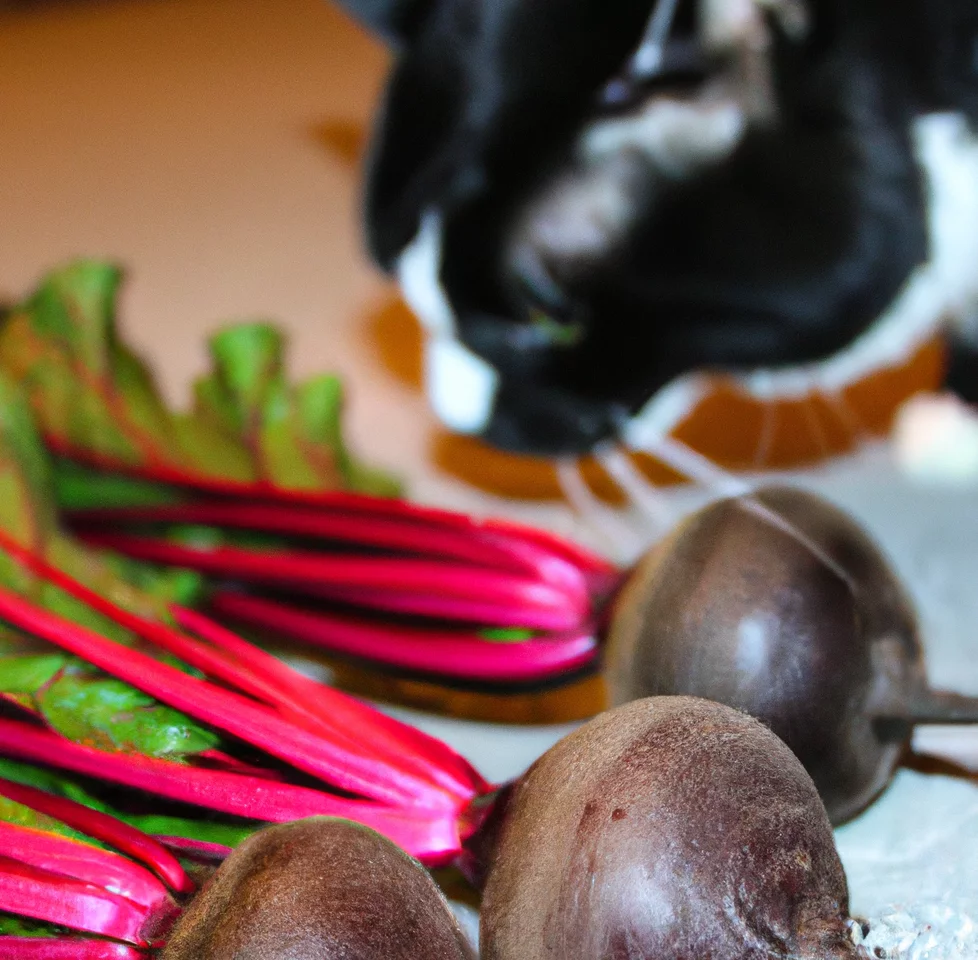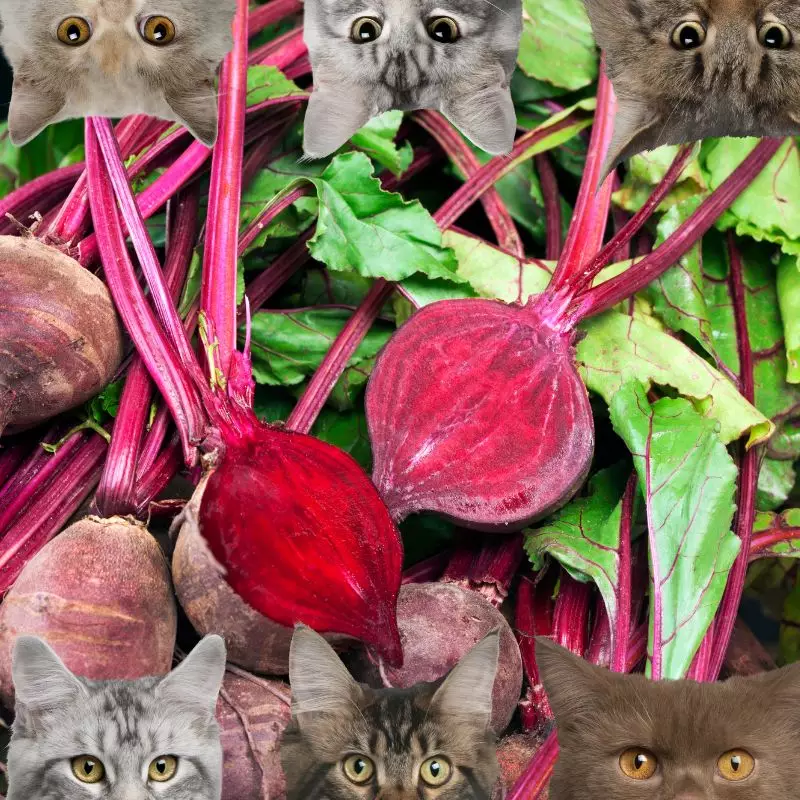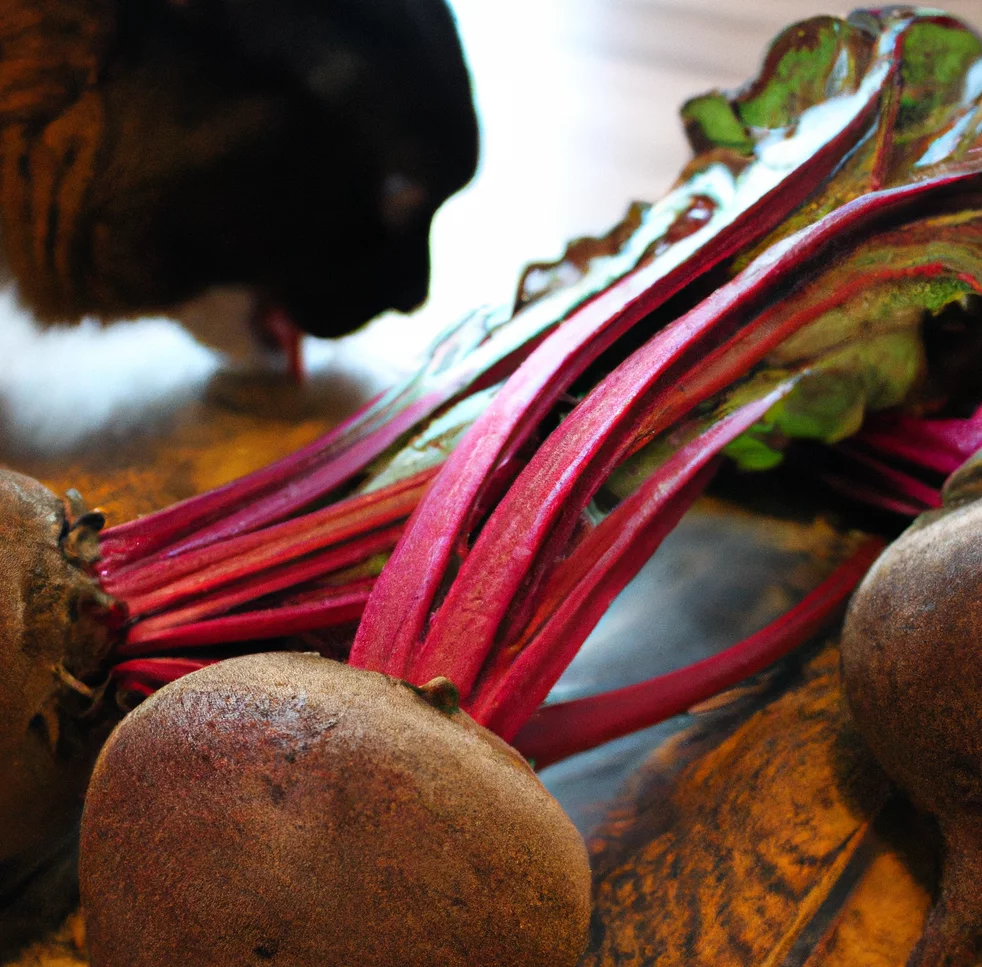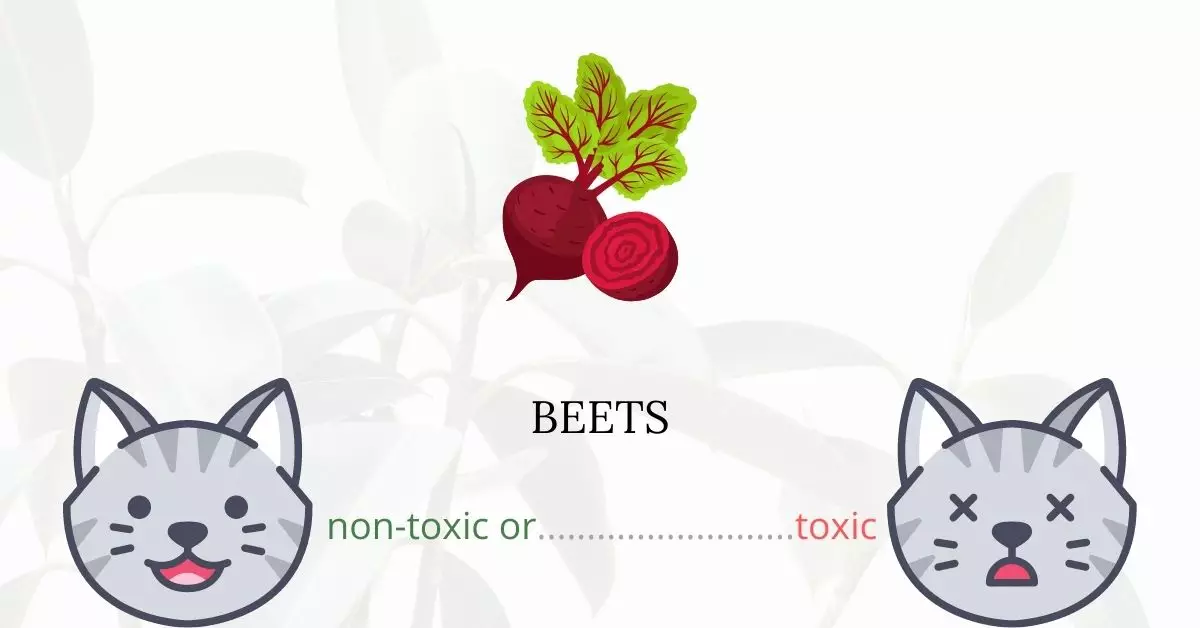Beets are generally considered safe and non-toxic for cats, as corroborated by the American Society for the Prevention of Cruelty to Animals (ASPCA) Poison Control Center, which also lists them as non-toxic for dogs and horses.
To ensure the highest level of accuracy and reliability in this article, we have collaborated with a team of seasoned Doctors of Veterinary Medicine (DVMs). Their valuable insights and expertise have empowered us to provide precise and current information on the potential risks linked with various plants, focusing on beets in this instance, and their subsequent impacts on cats. Additionally, to fortify the integrity of our information, meticulous research has been conducted using high-authority resources such as ASPCA and PetMD on every plant discussed, reinforcing our commitment to the well-being of your pets.
Can Cats Eat Beets?

Cats may consume beets in any form–raw, cooked, or dehydrated. They should not, however, consume pickled beets.
Pickling brine includes a lot of sodium, and cats who eat too much salt might have high sodium levels. Garlic, which is harmful to cats, may be present in the brine.
Although beets are healthy, cats should limit their consumption since they contain more sugar compared to other vegetables. Cats, as obligate carnivores, get the majority of their energy from protein and fat. Cats do not require as much carbohydrates.
Cats will not even like the sweet flavor of beets since they lack sweet taste receptors.
So, if you want to offer your cat beets, you can just give them as treats. They should not be used to substitute meals or be served on a regular basis.
What Are Beets?

Beta vulgaris is the scientific name for beets. Other common names of beets are Beet Root, Red Beet, Swiss Chard, Roman Kale, and Sugar Beet. They are a flowering plant species in the Amaranthaceae subfamily Betoideae.
Beta vulgaris is a herbaceous biennial or, in rare cases, perennial plant growing to a height of 120 centimeters; farmed varieties are mainly biannual. The roots of cultivated varieties are dark red, white, or yellow, and moderately to severely swollen and fleshy; in the wild subspecies, the roots are brown, fibrous, occasionally swollen, and woody.
On wild plants, the simple leaf blade is oblanceolate to heart-shaped, dark green to dark red, slightly meaty, with an entire or undulate border and five to 20 centimeters long. Upper leaves are smaller, with rhombic to narrowly lanceolate blades.
Beet flowers appear in spike-like, basally interrupted inflorescences. Very little flowers are found in one- to three-flowered glomerules in the axils of short bracts or in the top portion of the inflorescence in the absence of bracts.
Keeping Cats Away From Beets

If you have beets in your kitchen, make sure that your cat cannot reach them. Store it in a place out of your cat’s reach.
If you have a garden at home, you can try placing an aluminum foil near your plants to deter your cats. Since cats dislike the crinkly smell and texture of aluminum foil they tend to avoid it.
Plants to Avoid For Your Cats
If you are a cat owner and unsure if the plants growing in your yard are harmful to your cats, check out this list of toxic plants for cats. You can also check our list of non-toxic plants for cats.





